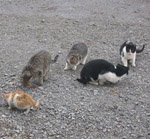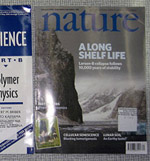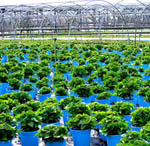How much are the ecosystems of New Jersey worth to society?
 Economics
Economics  The arresting colors of a cranberry harvest in New Jersey. Credit, USDA.The ecosystems of New Jersey may not receive as much media attention as the reality television shows and corrupt politicians that have besmirched the state's good name.
The arresting colors of a cranberry harvest in New Jersey. Credit, USDA.The ecosystems of New Jersey may not receive as much media attention as the reality television shows and corrupt politicians that have besmirched the state's good name.
But as a new study in the journal Environmental Management indicates, the ecosystems of the state are extremely important and provide society with services potentially worth as much as $20 billion per year.
Agricultural land and natural areas like forests and wetlands provide society with important environmental services like the temporary storage of flood waters, long term sequestration of greenhouse gasses, the purification of water and air, decomposition of wastes, erosion control, recreational and scenic values, etc.
While it can be difficult to put a dollar tag on these ecosystem services using conventional approaches to valuation (and the concept of a assigning a monetary figure to nature has generated controversy), they nonetheless have a big economic value for society.
An often mentioned example that clearly demonstrates this concept, wetlands can protect against huge financial losses from storms and flooding.
This new study is more than just an academic exercise or an effort to help New Jerseyites feel better about their state.
From 1986 - 2005, New Jersey converted roughly 150,000 acres of its forests, farmland, and wetlands to other uses - an amount equal to 4.4% of these ecosystems or 50 acres per day.
Placing a dollar figure on the value to society from these ecosystem services can help us evaluate the true cost of development.
To estimate the value, Shuang Liu with the Gund Institute at the University of Vermont along with fellow researchers conducted an analysis of 100 ecosystem valuation studies from North America and Europe. They took the findings from these studies by land use type and applied it to the setting of New Jersey.
This methodology suffers from a couple of shortcomings, which the authors acknowledge. For one, the values of the ecosystem services from other locations may not be completely transferable to similar land use types in New Jersey.
This is reflected in the fact that the authors arrived at range of values - from $11.6 -19.6 billion / year for the ecosystem services of the state. However, conducting full statewide assessment in New Jersey would be very expensive and complicated, and the authors believe their approach helps us get a handle on a potential range of values.
Another problem is that many ecosystem services have not been evaluated at all. Since these were not able to be included in the valuation, the total value of the ecosystem services in the state is likely significantly higher.
In terms of land use types, the researchers found that "beaches appear to provide the highest annual values ($42,147 per acre) with disturbance control ($27,276 per acre) and aesthetic and recreation values ($14,847 per acre) providing the largest individual values to that aggregated sum."
The next highest annual values were for freshwater wetlands ($8,695 per acre) and salt water wetlands ($6,527 per acre).
--by Rob Goldstein
Liu, S., Costanza, R., Troy, A., D’Aagostino, J., & Mates, W. (2010). Valuing New Jersey’s Ecosystem Services and Natural Capital: A Spatially Explicit Benefit Transfer Approach Environmental Management DOI: 10.1007/s00267-010-9483-5




Reader Comments